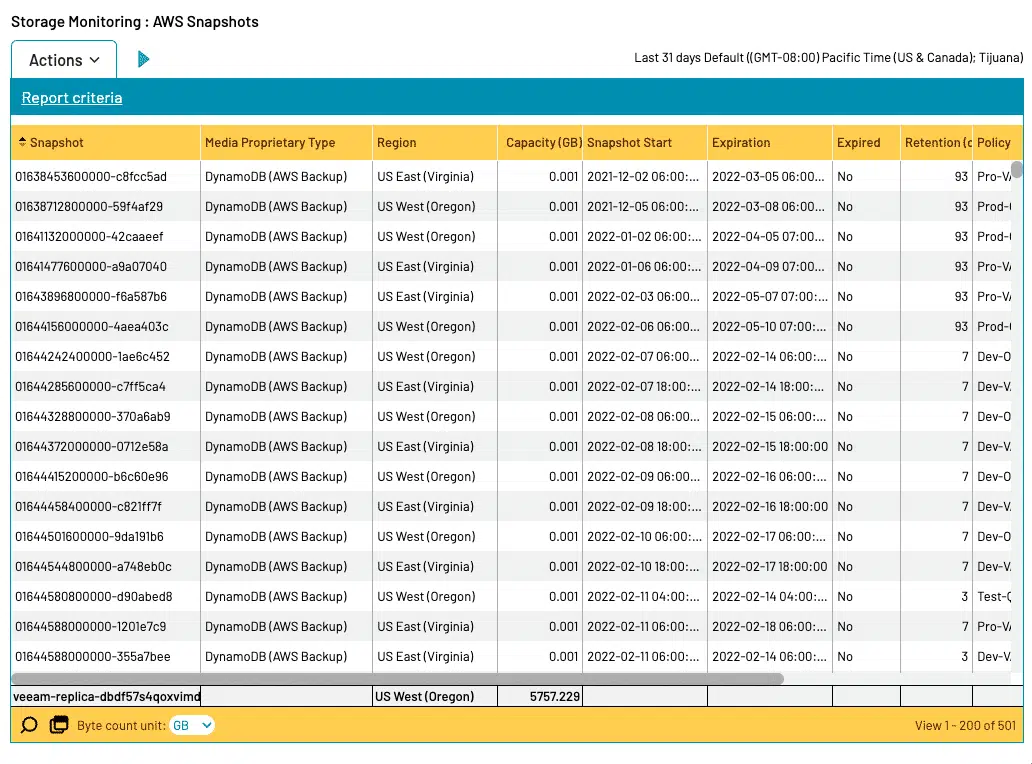Storage has always gone hand-in-hand with backup. However, the use of cloud storage for backup data has shifted a major storage challenge. It was once that storage capacity was a focal issue, with limited capacity leading to backup failures and perhaps an unexpected need for hefty, incremental capital expenditures.
The ongoing evolution to cloud backup storage has shifted this issue. While cloud storage offers completely new benefits to organization—access to more flexible technologies, reduced capital expenses, and improved speed of execution—it introduces a new challenge into the storage conversation: unfettered storage usage growth and unexpected storage expenses.
This shouldn’t be a deterrent to cloud backup migrations. The benefits are countless and organizations are already moving in this direction, with cloud backup and recovery representing the biggest cost increases in cloud service spending. Instead, it points to the need for proactive backup storage monitoring to mitigate usage proliferation and keep costs under control.
Review Environment for Backup Operations Issues
Keeping track of AWS and Azure assets, especially when you’re using different AWS resources like S3, FSx, DynamoDB, or EC2 within a single environment, is difficult. Unconsolidated, fragmented views of assets can make it challenging to identify unusual patterns in assets or in their backup behavior.
Built-in cloud protection analysis reports, standard in Bocada, aggregate these assets under a single pane. Not only do they allow admins to identify unprotected cloud assets but they can play a role in identifying operations issues resulting in duplicative data. One company using the report identified this very issue, allowing them to cut their storage usage costs in half after updating their backup operations.
Proactively Monitor Cloud Storage Usage
With confidence that the right backup operations and policies are properly in place, you’ll want to regularly monitor cloud storage usage. With recurring weekly or monthly reporting, you can visualize patterns in storage usage and assess if usage is trending as expected or veering into higher-than-expected usage levels.
Bocada’s Storage Trends Report provides an automated solution to do just that. By reporting on AWS and Azure usage, storage administrators have ready-made reports that allow for efficient monitoring and faster problem identification. One organization using this report was able to see concerning trends in storage usage, resulting in evolved backup strategy protocols around partial, differential, and full backups. They nearly halving the terabytes of storage in use while still meeting compliance guideline through this proactive monitoring.
Regularly Remove Expired Cloud Data
At a more tactical level, you should also consider regular monitoring of stored cloud backup data. By reviewing its expiration data and expiration readiness, you can proactively identify expired backup data using up storage and costing you unnecessary storage usage fees.
Bocada’s AWS Snapshot Report automates this process. By consolidating snapshot date with expiration and retention dates, in addition to expiration readiness, the report serves as a punch list for snapshots that should be reviewed and likely purged from backup storage. Regular clean up not only keeps backup environments clean but it serves to keep storage costs within budget.

